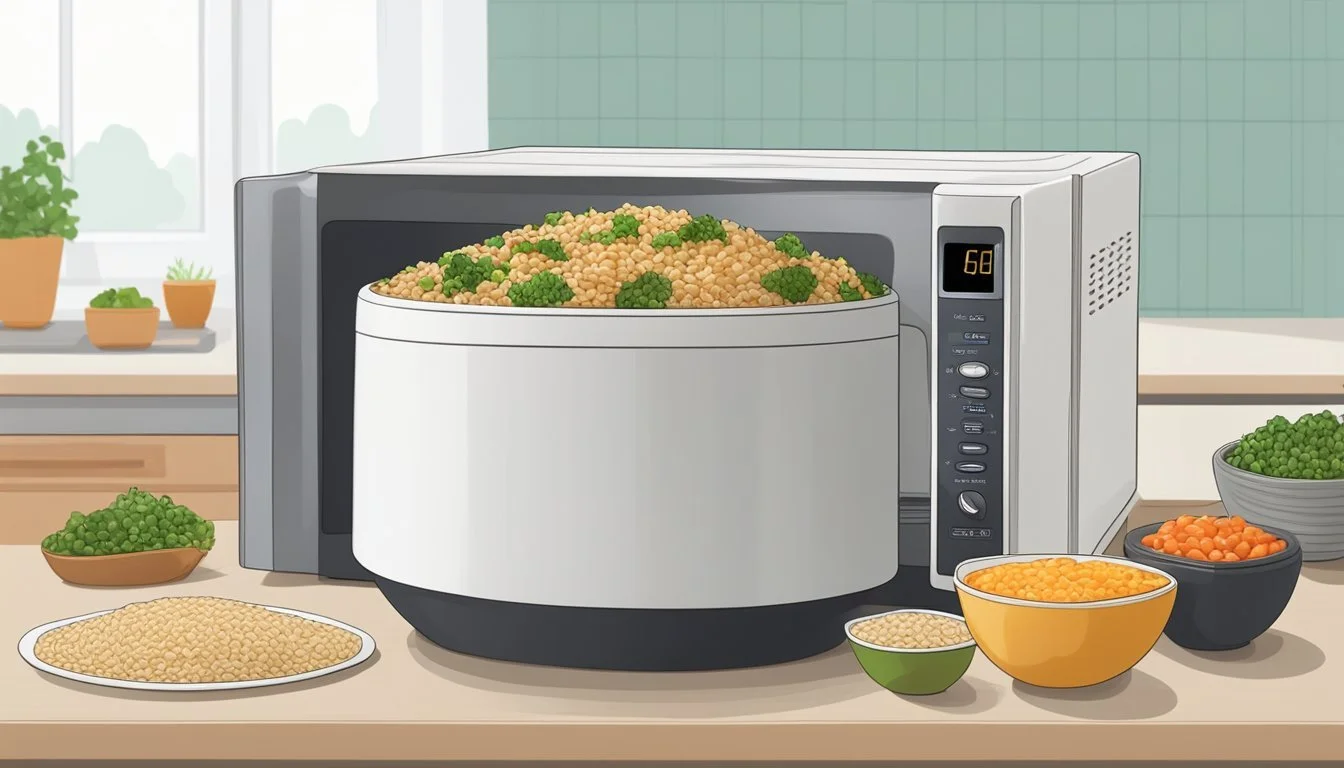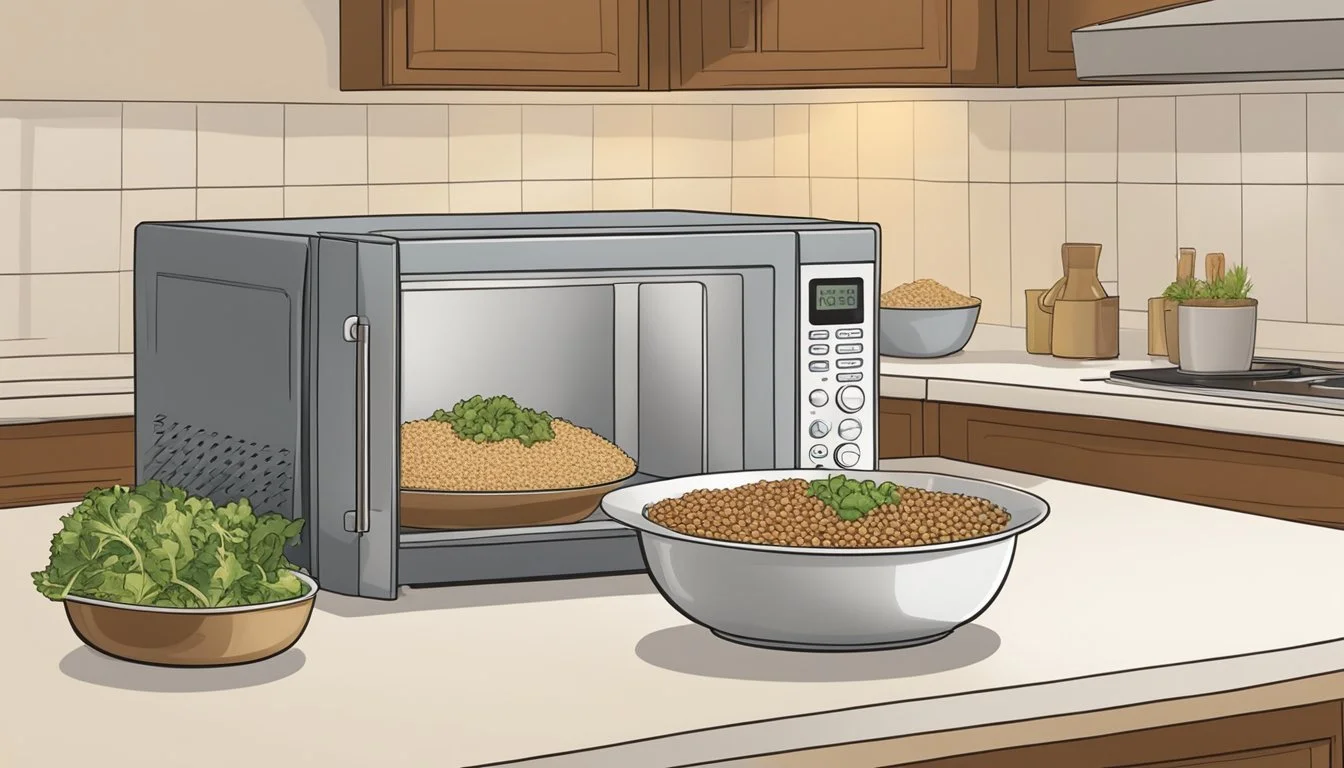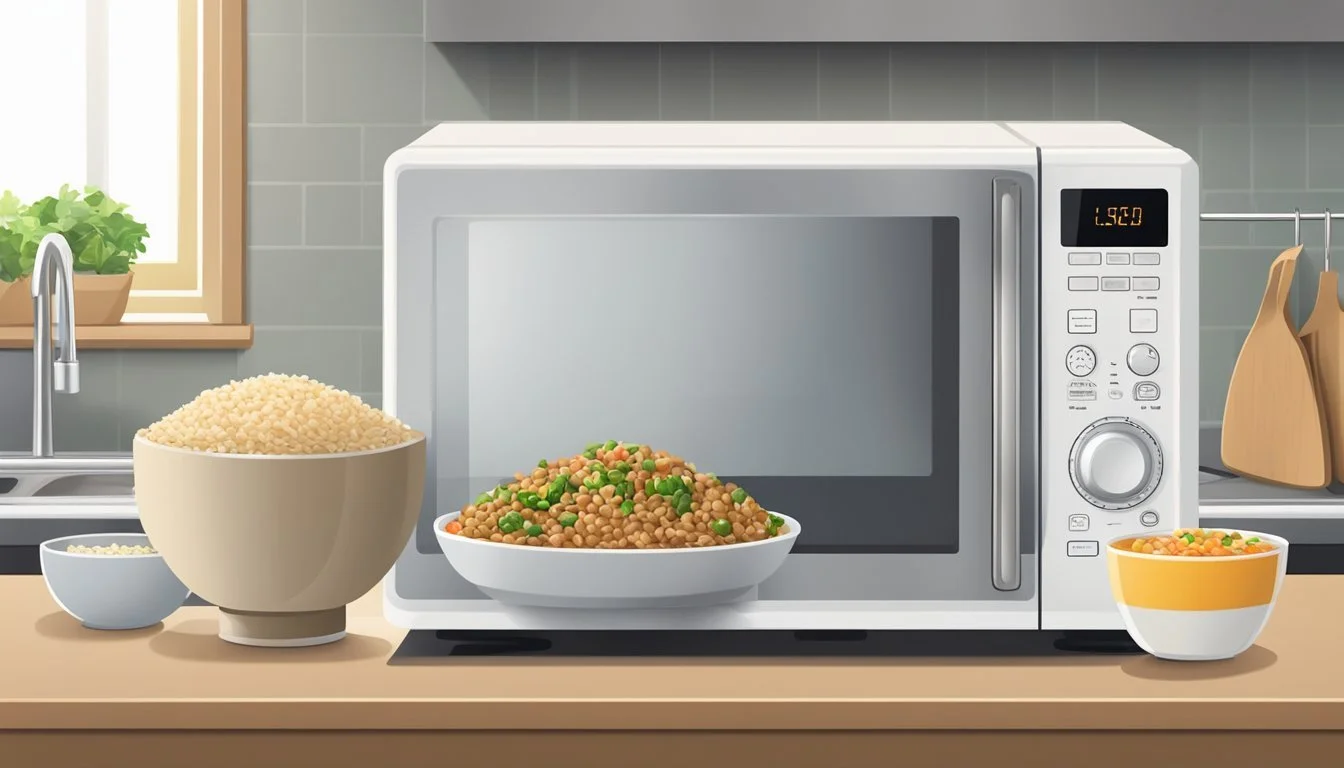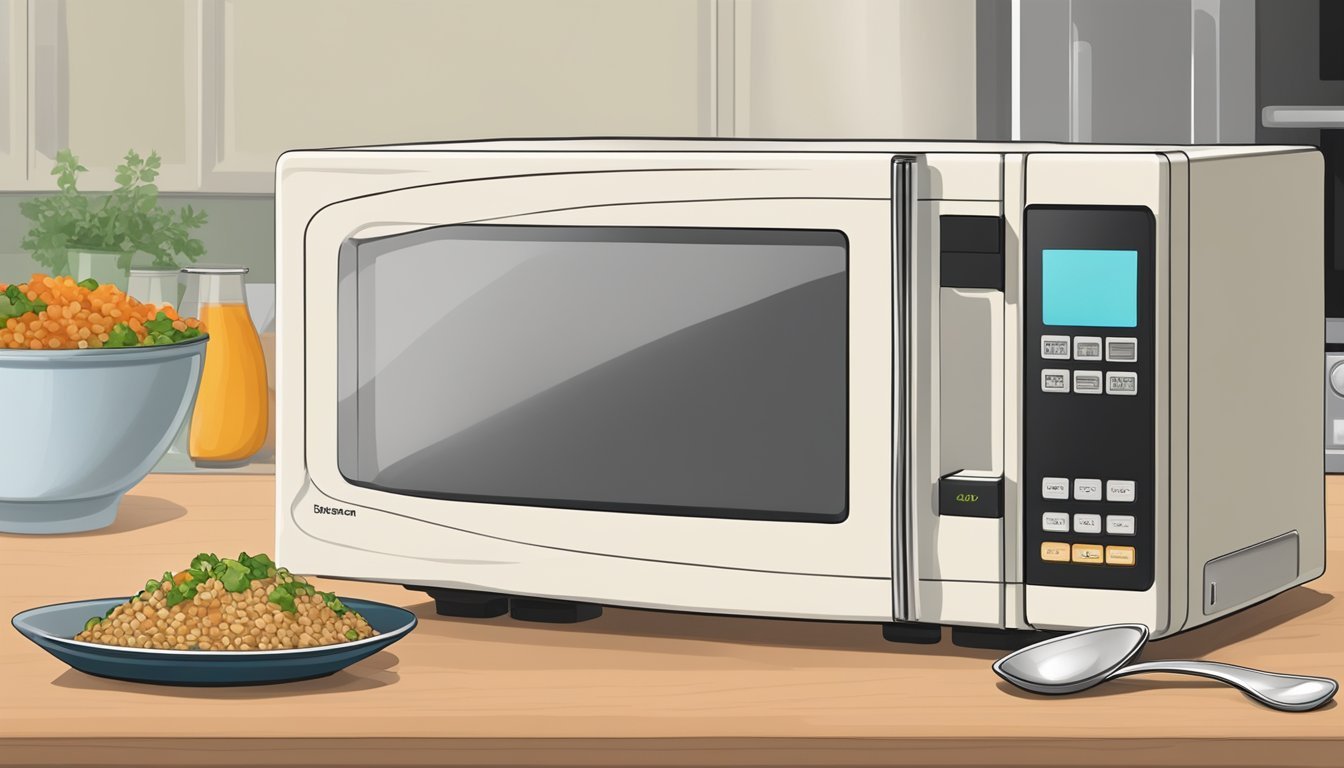Best Way to Reheat Brown Rice and Lentil Salad
Tips for Maintaining Perfect Texture
Reheating grain-based salads such as a brown rice (What wine goes well with rice?) and lentil salad requires careful attention to maintain the ingredients' appealing textures and flavors. Brown rice, with its nutty flavor and chewy texture, and lentils, known for their earthy taste and ability to hold their shape, are resilient components that respond well to gentle reheating methods. The goal is to warm the meal evenly without drying out or overcooking the individual elements.
To achieve the best results, understanding the properties of these grains and legumes is key. Brown rice's outer bran layer retains more moisture than white rice, making it more forgiving during the reheating process. Lentils, depending on their variety, may vary in firmness but generally keep their integrity when reheated properly. Heat distribution is critical because direct and high heat can compromise the salad's texture and moisture content.
Considering the combined textures of brown rice and lentils, the ideal approach is one that reintroduces a modest amount of moisture and uses a heat source that evenly warms the dish without scorching any component. This ensures that the reheated brown rice and lentil salad comes out just as delightful as when it was freshly made. Strategies for reheating must therefore cater to preserving the individual characteristics of the rice and lentils, while keeping them as close to their original state as possible.
Understanding the Fundamentals
Before reheating a brown rice and lentil salad, one must understand the unique properties of rice and the importance of food safety to preserve its texture and ensure safety. This knowledge is essential for achieving the best results without compromising on taste or health.
Types of Rice and Their Properties
Brown Rice: Characterized by its whole grain, as it retains the bran and germ, brown rice has a chewier texture and nuttier flavor compared to white rice. Its grains are rich in nutrients and typically maintain a fluffy texture when cooked properly.
White Rice: This includes rice types like jasmine and long-grain rice, which are milled to remove the bran and germ. This process gives white rice a lighter, fluffier texture and a shorter cooking time than brown rice.
Short-Grain Rice: This variety, which includes types like sushi rice, tends to be stickier due to its high starch content. The grains are shorter and rounder compared to long-grain rice.
Wild Rice: Technically not rice but the seed of a grass species, wild rice has a firm texture and a strong, nutty flavor. It is often mixed with other rice varieties for a varied texture.
Health Risks: Bacillus Cereus in Leftover Rice
Bacillus cereus is a concern when reheating rice, as it can survive cooking and multiply if the rice is not properly stored. To minimize risk:
Store leftover rice in the refrigerator within 2 hours of cooking.
Reheat to an internal temperature of at least 165°F (74°C).
Consume reheated rice as soon as possible.
Understanding these fundamentals sets the foundation for reheating methods that preserve the salad's desirable texture while ensuring it is safe to eat.
Preparation Before Reheating
Ensuring the brown rice and lentil salad retains its texture and flavour starts with proper preparation before reheating. This involves effective storage and bringing the rice to room temperature.
Storing Rice Effectively to Maintain Quality
Storing leftovers is crucial for preserving the quality of brown rice and lentil salad. One should store the rice and lentil salad in an airtight container or reusable silicone bags to prevent moisture loss and odor absorption. For short-term storage, placing the container in the refrigerator is adequate. However, for longer-term storage, one can opt for freezer-safe bags or containers, making sure to label them with the date of storage.
Refrigerator: Keep below 40°F (4°C) for 3-4 days.
Freezer: Keep at 0°F (-18°C) for up to 1 month for optimal quality.
Bringing Rice to Room Temperature
Before reheating, it’s advisable to bring the rice and lentil salad to room temperature. This helps in reheating more evenly, preventing cold spots, and maintaining the texture. Take the salad out of the refrigerator or freezer approximately 20-30 minutes before planning to heat it. If coming from the freezer, one should thaw it overnight in the refrigerator before allowing it to come to room temperature.
From Refrigerator: Set out 20-30 minutes prior to reheating.
From Freezer: Thaw in the refrigerator and then set out.
Careful attention to these steps is the first part of ensuring one's brown rice and lentil salad is reheated to perfection, with the texture and taste preserved as closely as possible to the original meal.
Choosing the Right Reheating Method
Choosing the correct reheating method for brown rice and lentil salad is crucial for preserving its flavor and texture. Each method has its tradeoffs, and understanding these will help you make an informed decision for the best results.
Microwave Method: Pros and Cons
Pros:
Quick: Microwaving is the fastest way to reheat, usually taking only a couple of minutes.
Convenient: It is straightforward and does not require additional pots or pans.
Cons:
Uneven Heating: Microwaving can heat food unevenly, potentially resulting in some cold spots.
Texture Risk: It can dry out the rice and lentils if not covered or if there's insufficient moisture.
To microwave brown rice and lentil salad effectively, place it in a microwave-safe dish, sprinkle some water to maintain moisture, and cover with a lid or damp paper towel. Use medium heat to avoid drying out the meal.
Stovetop Technique for Optimal Texture
Pros:
Control: The cook can adjust the heat as needed, allowing for better control of the reheating process.
Texture Preservation: Gently stirring the salad on the stove can preserve its texture better than microwaving.
Cons:
Time-Consuming: Requires more time and attention compared to the microwave.
More Clean-Up: Involves more utensils, resulting in additional cleaning.
To use the stovetop method, add the salad to a pan with a splash of water or broth. Heat over medium-low heat, stirring occasionally until the dish is heated through evenly.
Oven Reheating for Even Warmth
Pros:
Evenly Reheated Meal: The oven can provide consistent heat distribution.
Large Quantities: It is ideal for reheating larger portions that might not fit in a microwave.
Cons:
Time: This method typically takes longer than the microwave or stovetop.
Energy Use: Using an oven for reheating can use more energy.
For oven reheating, spread the salad in an even layer in a baking dish, lightly moisten with water or broth, and cover with foil. Heat at a low temperature (around 300°F or 150°C) until warmed through.
Reheating Rice Without Compromising Quality
Proper reheating techniques ensure that rice retains its texture and moisture. The following methods specifically target the preservation of brown rice's natural nuttiness and the complementing textures of lentil salad.
Adding Moisture to Prevent Dryness
One critical step in reheating rice is adding moisture to prevent it from becoming dry. A small amount of water should be sprinkled over the rice before reheating. For each cup of rice, adding approximately one to two tablespoons of water can help retain moisture. In case of using a microwave, covering the rice with a damp paper towel will also assist in moisture retention.
Proper Use of Utensils to Fluff Rice
Once the rice is heated, it is important to fluff it with the proper utensils to maintain its texture. A fork is recommended for this task. Gently breaking up any clumps and stirring occasionally with a fork not only separates the grains but also helps in achieving a fluffy rice texture without compacting it, as can happen with spoons or spatulas.
Timing and Temperature Control
Reheating rice with timing and temperature control is essential for serving it steaming hot without overcooking. On a stove, brown rice should be reheated over medium-low heat with the lid on to allow enough steam to build up inside the pot, heating the rice uniformly. It typically takes about five minutes. In a microwave, heating in short intervals of 30 seconds while stirring in between can lead to evenly warmed rice without over-drying.
Preventing Foodborne Illness
When reheating brown rice and lentil salad, it's crucial to prevent foodborne illness by understanding and controlling the role of temperature, and by employing safe practices to limit bacteria growth.
Understanding the Role of Temperature
Temperature is a critical factor in both the prevention of foodborne illness and the maintenance of food quality. Brown rice and lentil salad, like any other food, can become a breeding ground for bacteria if it is kept at temperatures between 40°F (4°C) and 140°F (60°C). This range is known as the "danger zone" as bacteria can multiply rapidly at these temperatures.
Safe Reheating Temperatures: To eliminate potential bacteria, brown rice and lentil salad should be reheated to an internal temperature of at least 165°F (74°C).
Safe Practices to Avoid Bacteria Growth
Maintaining food safety and preventing bacteria growth in brown rice and lentil salad involve several key practices:
Refrigeration: After cooking or initial serving, the salad should be promptly refrigerated at temperatures below 40°F (4°C).
Reheat only the amount you plan to consume.
Reheat in a microwave, stirring occasionally, and adding a splash of water if needed.
Alternatively, heat in an oven-safe dish covered with foil at 350°F (175°C) until reaching the safe internal temperature.
Limitations on Reheating:
To prevent bacterial growth, reheated brown rice and lentil salad should never sit out at room temperature for more than two hours.
Leftovers should not be reheated more than once to minimize the risk of foodborne illness.
Enhancing Flavor and Variety
To rejuvenate brown rice and lentil salads, one should not only focus on the reheating process but also on the artful integration of ingredients and innovative twists to traditional recipes, ensuring improved taste and an enjoyable variety.
Integrating Ingredients for Improved Taste
When reheating brown rice and lentil salad, incorporating flavorful oils or fats can significantly enhance the dish's palatability. Olive oil and butter can be drizzled or stirred in after the reheating process to reintroduce moisture and rich, aromatic flavors. One should season with salt and freshly ground peppers to taste, which will accentuate the natural flavors of the lentils and rice.
Flavorful additions to consider:
Fresh herbs like parsley or cilantro for a bright note
Roasted nuts or seeds for added crunch and nuttiness
Lemon zest or a squeeze of citrus for a refreshing tang
Creative Ideas for Leftover Rice Dishes
Leftovers present a perfect opportunity to showcase culinary skills by transforming brown rice and lentil salad into other enticing rice recipes.
Try crafting the following dishes:
Chicken Fried Rice: Incorporate leftover chicken, peas, carrots, and a soy sauce-based seasoning, stir-frying everything together for a protein-rich variation.
Fried Rice: Reheat the rice and lentils together with a blend of vegetables, tofu, or shrimp, adding in soy or oyster sauce for that classic fried rice flavor.
Curry: Utilize the rice and lentils as a hearty base for a curry, mixing in a range of spices and coconut milk to create a comforting dish.
Soup: Enrich a simple vegetable soup with the addition of rice and lentils, offering substance and a satisfying texture to a light broth.
By focusing on these elements, one ensures that a reheated brown rice and lentil salad not only maintains its texture but also gains in flavor and culinary appeal.
Additional Tips and Tricks
When reheating brown rice and lentil salad, one must be mindful of preserving texture and flavor. The key is to use kitchen appliances effectively and avoid the pitfalls of overcooking or undercooking the rice.
Using Kitchen Gadgets Effectively
Microwaves are incredibly convenient for reheating food. For brown rice, one should place the desired amount in a microwave-safe bowl or dish, add a drizzle of water or a few ice cubes to reintroduce moisture, and cover it with a damp paper towel or microwave-safe plastic wrap. This setup retains steam and evenly distributes heat.
Reheat in Short Intervals: Warm the rice in 20-second bursts, stirring between each, to promote even heating.
Ice Cube Technique: Placing an ice cube in the center of the dish before covering can help to add moisture as it melts, without making the rice too wet.
Skillets or woks are excellent for reheating and adding a desirable texture. Over medium heat, stir the rice continuously, ensuring each grain is evenly heated, and the lentils warm through without becoming mushy.
Oil in Skillets: A little bit of oil can prevent sticking and help heat the rice evenly.
Preventing Overcooked and Undercooked Rice
Uneven reheating often leads to overcooked or undercooked rice. In a saucepan, one can add a small amount of liquid and cover the rice with a lid to steam it gently.
Consistent Heat Source: Using a consistent low heat can prevent the rice from getting overcooked at the bottom or around the edges.
Aluminum Foil in Oven: When using an oven, spread rice in a layer in a baking dish, lightly sprinkle with water, and cover with aluminum foil to ensure the rice doesn't dry out.
Implementing these techniques will ensure that reheated brown rice and lentil salad maintains the desired texture and warmth, making it almost as good as when it was freshly made.







